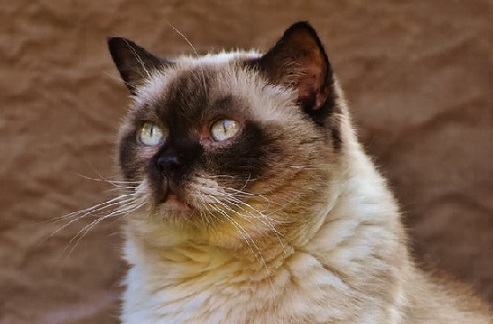Feline Diabetes -- Causes, Symptoms, Treatment, Complications, and Outlook
Unfortunately some of our feline friends suffer from diabetes. Feline diabetes is a serious illness and if left untreated can lead to a horrible death for the affected cat.
If we consider that cats trail only slightly behind dogs as the most popular pet in the United States. (According to the American Veterinary Medical Foundation, approximately one-third of all U.S. households own at least one cat. The average however is two cats per household in households that own cats. These numbers translate into more than 74 million domesticated cats in the United States alone.)
The huge numbers of cats and the increasing problem of obesity in pets, which appears to play a role in the development of feline diabetes - results in thousands, if not millions, of pet owners who need to be aware of the risk factors, symptoms, treatment and outlook for this all-too-common disease.
What Causes Feline Diabetes?
 The exact cause of feline diabetes is not yet known. However, like in humans, a cat's body needs to produce insulin to absorb sugar glucose. Sugar glucose is the body's main energy source. Diabetes prevents the body, specifically the pancreas, from producing proper amounts of insulin. This results in too-high, unhealthy levels of glucose.
The exact cause of feline diabetes is not yet known. However, like in humans, a cat's body needs to produce insulin to absorb sugar glucose. Sugar glucose is the body's main energy source. Diabetes prevents the body, specifically the pancreas, from producing proper amounts of insulin. This results in too-high, unhealthy levels of glucose.
What are the Risk Factors?
Risk factors include obesity, advanced age, and physical activity. Male cats, too, are more likely to develop diabetes than females, according to the Cornell University College of Veterinary Medicine, especially middle-aged male cats that live indoors. The reason(s) for this is unknown. Burmese cats also seem to have a propensity for the disease, the cause of which is also unknown at this time.
What are the Symptoms of Feline Diabetes?
Weight loss resulting from the body breaking down fats and proteins for needed energy is a symptom of feline diabetes. Your cat may lose weight even though she seems to be hungrier than usual, as increased appetite is another symptom of diabetes. Excessive thirst and excessive urination are additional symptoms often present in cats with feline diabetes. Your cat may seem more tired than usual and depressed and uninterested in her surroundings.
How Do We Treat Diabetes in Our Cats?
The most common form of treatment for feline diabetes is insulin administered via injection. It has been found that oral medications rarely work for cats. Your veterinarian will determine how often your cat needs shots based on his or her measured response to insulin therapy.
I have taken care of cats with feline diabetes. One in particular I remember was an older cat that didn't seem to mind the shots. However, its skin was extremely tight, making the shot tricky to administer because you have to pull the skin up on the back between the shoulder blades and neck area before inserting the needle.
Training a cat to accept the shots on a regular basis can be difficult as you must hold the cat immobile in position to administer the medication properly. Your vet can first train you on the proper technique, and then hopefully you can train your cat.
In addition, your cat may need a restricted diet to help manage the disease, specifically a diet low in carbohydrates. However, concerning diet, this too, your veterinarian can advise you on because each case is a bit different due to body weight, activity levels, age and other factors.
What are the Complications of Feline Diabetes?
If you're working on controlling feline diabetes in your cat, remain aware of possible complications from the disease. Hypoglycemia, a serious medical condition brought about by the sugar levels in the blood being too low, is a complication that pet owners need to be aware of when regularly administering insulin. This condition can occur when your cat's body takes in too much insulin and can quickly turn into a medical emergency. That's one reason why constant monitoring and working in conjunction with your veterinarian are so important.
Your vet can tell you what to look for as signs that your cat may be experiencing hypoglycemia. For example, the Hallett Veterinary Hospital lists the symptoms of hypoglycemia in severity order as: lethargy, weakness, disorientation, tremors or twitching, blindness, seizures, coma and death. Alert monitoring can prevent your cat from reaching a critical stage.
It's extremely important to follow the advice of your vet. If left untreated, diabetes in cats can lead to liver disease and renal failure.
What is the Outlook for a Cat with Diabetes?
Many cats live long healthy lives after diabetes diagnosis by taking insulin injections daily and eating a restricted diet. So if you think your cat may be suffering from this condition, it's important to seek the help of a professional and begin treatment immediately. Your vet will tell you the specifics of what you need to do at home to control the diabetes in addition to giving your cat insulin shots. This may include monitoring daily glucose levels, water and food intake, urine production and appetite levels. Just remember, if you remain vigilant and active in treating the disease it doesn't have to be a death sentence by any means.
References:
AVMA: U.S. Pet Ownership Statistics
Cornell University College of Veterinary Medicine: Feline Diabetes
Cornell University College of Veterinary Medicine: Feline Kidney Disease
Hallett Veterinary Hospital: Feline Diabetes
VCA Hospitals: Diabetes Mellitus in Cats - Overview
